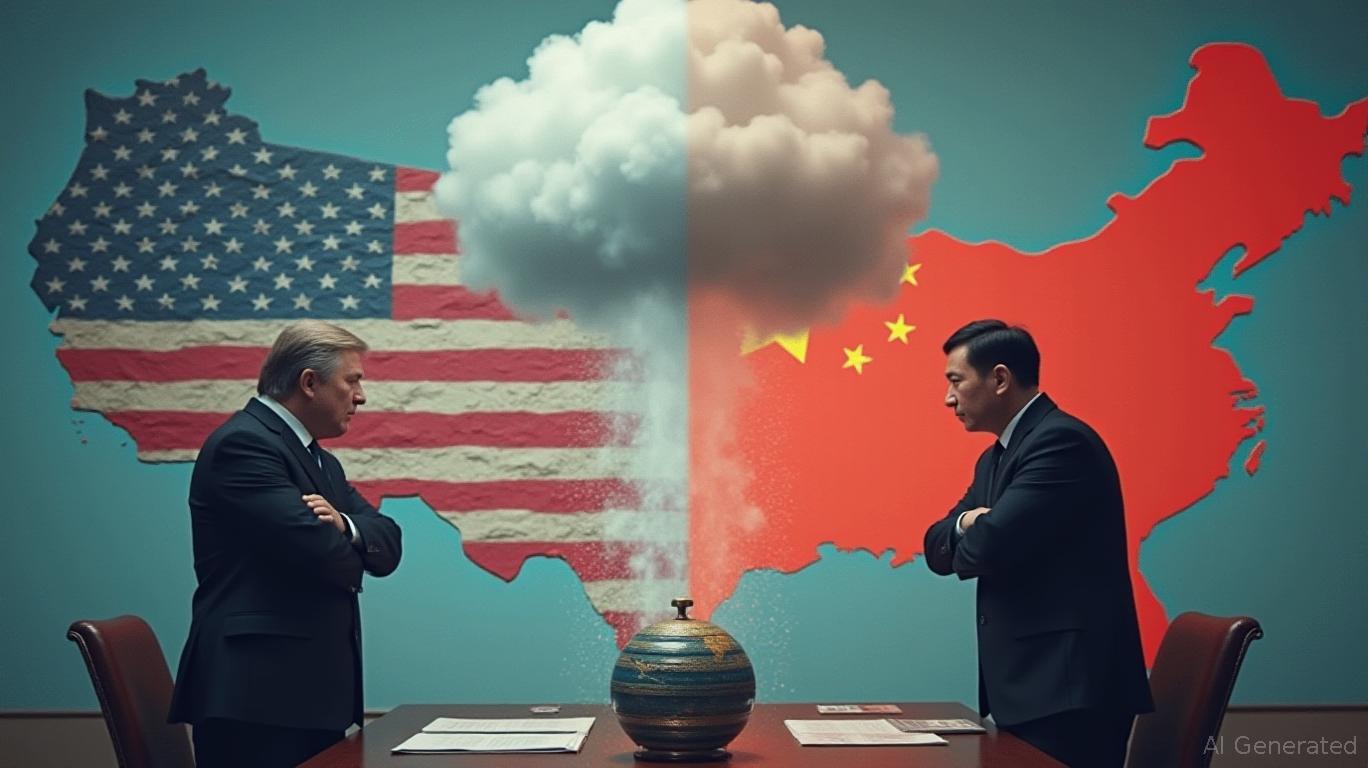US Trade Strategy: Navigating Turbulent Waters Amid Reciprocity Demands
The White House’s aggressive trade agenda in early 2025 has reshaped global commerce, blending unilateral tariffs, selective diplomacy, and national security imperatives. While the administration claims progress in forging reciprocal agreements with key allies like South Korea, Japan, and India, the reality remains fraught with geopolitical tension, economic uncertainty, and unresolved structural challenges. For investors, this environment demands a nuanced assessment of risks and opportunities across sectors and geographies.
The Reciprocity Gambit: Tariffs as Leverage
The White House’s April 2025 imposition of a 10% baseline tariff on imports from all trading partners except negotiated allies marked a bold escalation of its “America First” strategy. This measure, paired with escalating threats against nations listed in Annex I (not disclosed), aims to force reciprocal concessions on tariffs and non-tariff barriers.

The policy’s immediate impact is visible in USMCA-compliant trade, where North American partners benefit from tariff-free flows, while non-compliant imports face 25% levies. However, critics argue this creates a fragmented landscape:
- Sectors like automobiles and semiconductors face dual pressures: tariffs on imports contrast with exemptions for tech giants like Apple and Nvidia, signaling a push to “onshore” manufacturing.
Diplomatic Crosscurrents: Allies and Adversaries
Negotiations with strategic allies reveal both ambition and disarray. South Korea and Japan, pivotal for semiconductors and automotive supply chains, are under pressure to lower tariffs on US goods (e.g., Seoul’s 15% auto tariff vs. US’s 2.5%). Yet progress remains elusive:
- South Korea: Despite Trade Minister Cheong In-kyo’s reported “willingness to deal,” talks stall over demands to reduce its 9.4% average tariff and address non-tariff barriers.
- Japan: The US has yet to resolve longstanding disputes over auto tariffs and regulatory disparities, while Tokyo braces for potential Section 232 probes into semiconductors.
Meanwhile, the EU’s offer to eliminate car tariffs was rebuffed, underscoring the administration’s rigid reciprocity threshold. This rigidity risks alienating traditional allies, as evidenced by a Reuters report on trilateral coordination between China, Japan, and South Korea to counter US measures.
Geopolitical Risks and Market Volatility
The strategy’s economic fallout is palpable:
-
- Stock markets have reacted nervously, with tech stocks (e.g., NVIDIA, Intel) rebounding from exemptions but facing headwinds from global demand shocks.
- Emerging economies like Vietnam and India, initially seen as tariff “gateways,” now confront scrutiny over Chinese transshipment, complicating their growth trajectories.
The administration’s focus on manufacturing revival—citing a 55% R&D contribution from US factories and a defense-industrial deficit—has yet to translate into sustained investment. Manufacturing’s GDP share (11%) and the loss of 5 million jobs since 1997 highlight structural challenges.
Investment Implications: Navigating the Storm
For investors, the path forward is littered with contradictions:
1. Sectoral Winners and Losers:
- Winners: Domestic manufacturers in autos, semiconductors, and pharmaceuticals may benefit from reshoring incentives.
- Losers: Export-dependent economies (e.g., South Korea’s tech sector, Japan’s auto industry) face margin pressures.
-
- Currency and Commodity Risks:
- The US dollar’s weakening trend since early 2025 reflects market skepticism about tariff-driven growth.
Commodities like oil and metals face volatility as supply chains reconfigure.
Geopolitical Arbitrage:
- Investors may profit from diversifying supply chains away from US punitive zones, favoring regions like Southeast Asia or the EU.
Conclusion: A Fragile Equilibrium
The White House’s trade strategy has achieved limited tangible progress, with no major agreements sealed beyond USMCA’s existing terms. While tariffs have forced reluctant talks with allies, the administration’s lack of clarity, inconsistent messaging, and geopolitical overreach risk deepening global fragmentation.
Key data underscores the stakes:
- The 10% tariff represents the highest rate since the 1930s, with estimates suggesting a 1–2% GDP drag if sustained.
- US manufacturing employment remains 30% below its 1997 peak, despite aggressive rhetoric.
- Regional blocs like the China-Japan-South Korea axis threaten to counter US influence, complicating investment in Asia.
For investors, the optimal stance is cautious diversification—prioritizing sectors insulated from tariffs, hedging against currency swings, and avoiding overexposure to trade-dependent economies. The White House’s gamble on reciprocity may yet backfire, leaving markets to navigate a storm of its own making.


_f86da1b01749674376692.jpeg)








My stock profile been all red